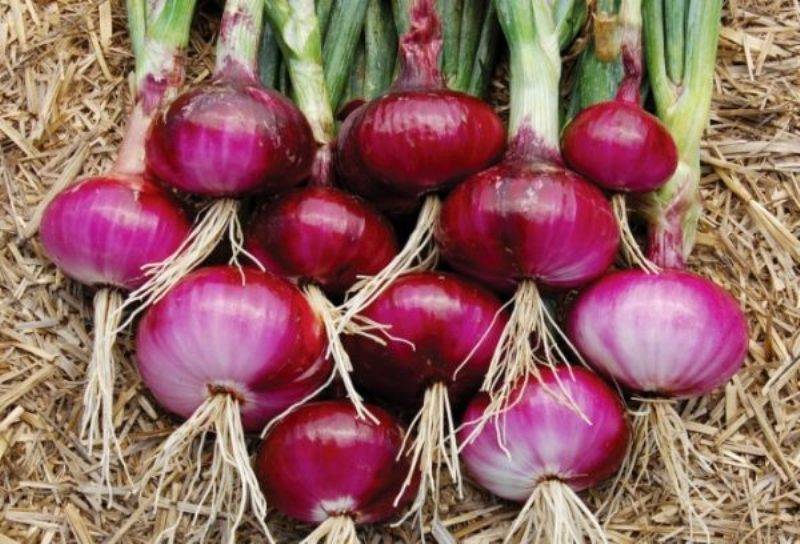
Onion is a widely cultivated vegetable all across the world. It is low in nutrients but is valued for the flavor and is used widely in cooking. Cultivation of onion is generally done in the plains and middle mountain areas during the Rabi season but in many areas it is grown in Kharif season too. Indian onion demand is also good abroad, so it is an important commercial crop. Therefore, our country is one of the major exporter of onions. Onion plays an important role in curing diseases like jaundice, constipation, hemorrhoids and liver related problems.
Farmer can get good yields from onion cultivation by keeping some important agricultural activities in their mind before growing them. For good yields it is necessary to have knowledge of advanced technical and advanced varieties of farming.
Onion Cultivation
Climatic Requirements
Onion is very sensitive to sunlight and temperature. It is primarily a winter crop. Usually it requires 10 to 15 ° C for good growth and 20 to 30 ° C for growth of tubers, and 30 to 35 ° C temperature and 10 to 12 hours of sunlight while extracting tubers. Onion cultivation has a huge impact on yield if there is no adverse climate.
Suitable land
Onion cultivation can be done in all types of soil. For obtaining maximum yield, loamy soil is most suitable. The growth of the tuber is not good in more alkaline soil. pH of soil should be between 6.5 to 7.5.
Land preparation
The field should be plowed four to five times for good onion production. After doing each plowing, the soil should be puffed up by applying it. On a 1.2 meter wide strip at a height of 15 cm from the ground surface transplanting should be done . For this thing, the field can also be prepared with raised-bed system.
Manures and Fertilizers for more Production
Rotten cow dung fertilizer should be mixed well in the soil by giving 20 to 30 days before transplanting for more production of onion. While doing land preparing, at the time of final plowing, the entire quantity of phosphorus and potash should be given in the field and the third part of nitrogen, the remaining nitrogen should be given as an uptake 20 to 25 days after transplanting the first part in two, the second. The portion should be accorded after 50 to 60 days or before the tuber is formed.

Amount of fertilizers
-
Rotten cow dung manure - 300 to 500 quintals per hectare
-
Nitrogen - 100 to 120 kg per hectare
-
Phosphorus - 50 to 60 kg per hectare
-
Potash - 60 to 70 kg per hectare
Advanced varieties of Onions
Rabi Weather
Agrifound Light Red, Agrifound Dark Red, Arka Kalyan, Arka Niketan, Pusa Sadhvi, Patna Red, Pusa Red, N.- 53, Nashik Red, Basant, Poona Red, Bhima Red, Bhima Super etc. are prominent.
Kharif season
Arco Lalima, Arka Pitamber, Arka Record, N. 53, Agrifound Dark Red, Basant etc. are prominent.
Red color Varieties
Bhima Lal, Bhima Dark Red, Bhima Super, Hisar - 2, Punjab Lal Gol, Punjab Selection, Patna Lal, Nashik Lal, Red Globe, Bellary Lal, Poona Lal, Pusa Lal, Pusa Ratanar, Arka Niketan, Arka Pragati, Arka Lime, Kalyanpur Lal and L-2-4-1 etc. are prominent.
Yellow color varieties
IIHR Pilli, Arca Pitamber, Early Grano and Yellow Globe etc. are prominent.
White color Varieties
Bhima Shubhra, Bhima Shweta, Onion Selection- 131, Udaipur 102, Onion Selection- 106, Nashik White, White Globe, Pusa White Round, Pusa White Flat, EN- 247-9-1 and Pusa Round Flat etc. Is the main one.
Hybrid varieties
X caliver, Barr Gandi, Kopi Moren and Rosi Sama etc. For detailed information on onion varieties, read here - Advanced varieties of onions, know their characteristics and yields
Harvesting
Spray Cycocel at 200ppm with carbendazim at 1000 ppm for 30 days before harvesting to extend the shelf life of onion. Harvesting is done normally by pulling out plants when tops are drooping but still green. During hot days when soil is hard, bulbs are pulled out with hands.
















